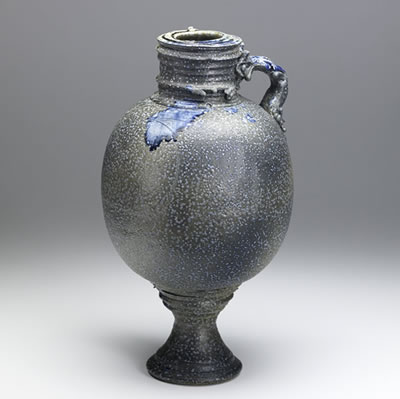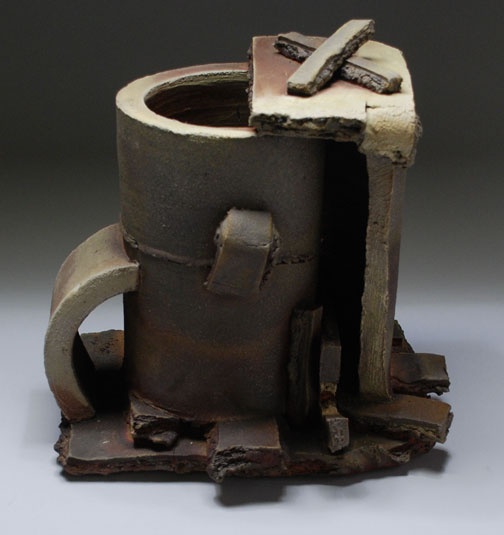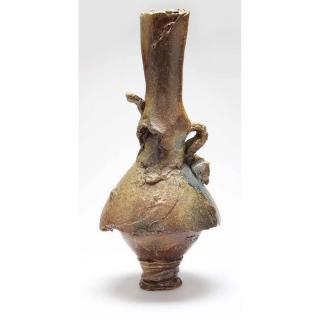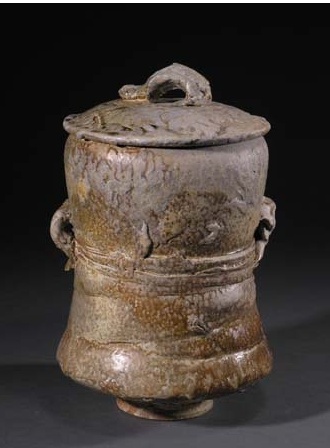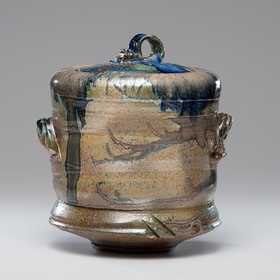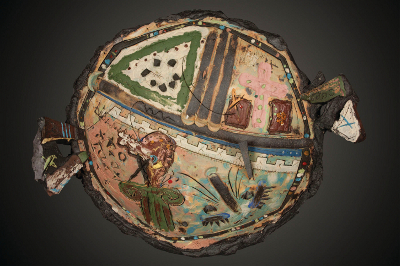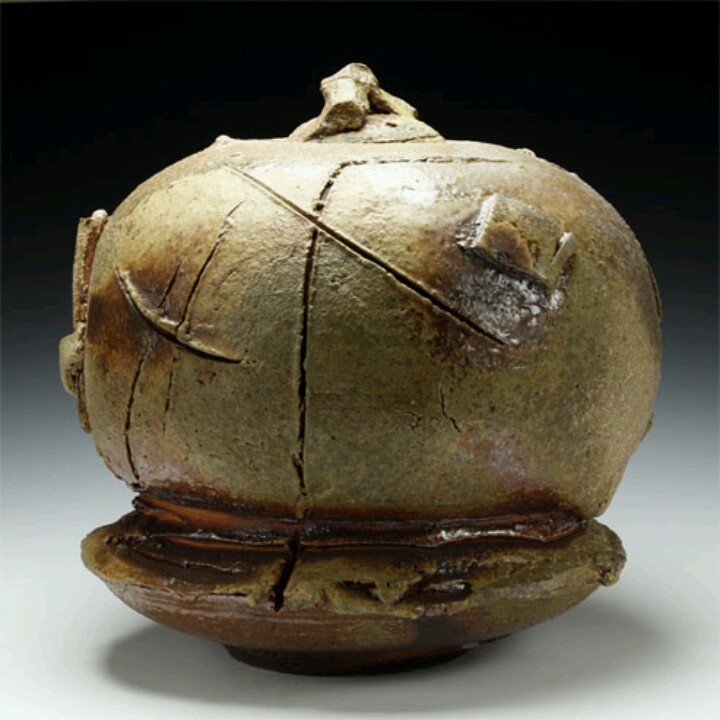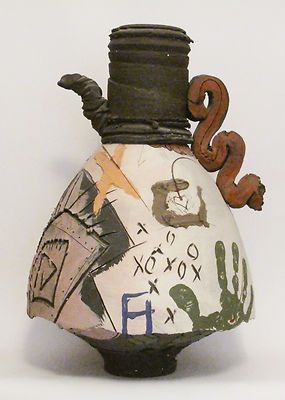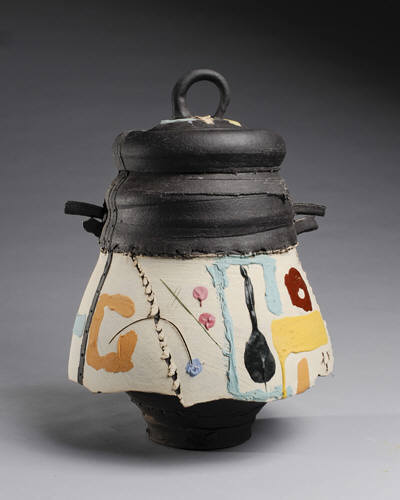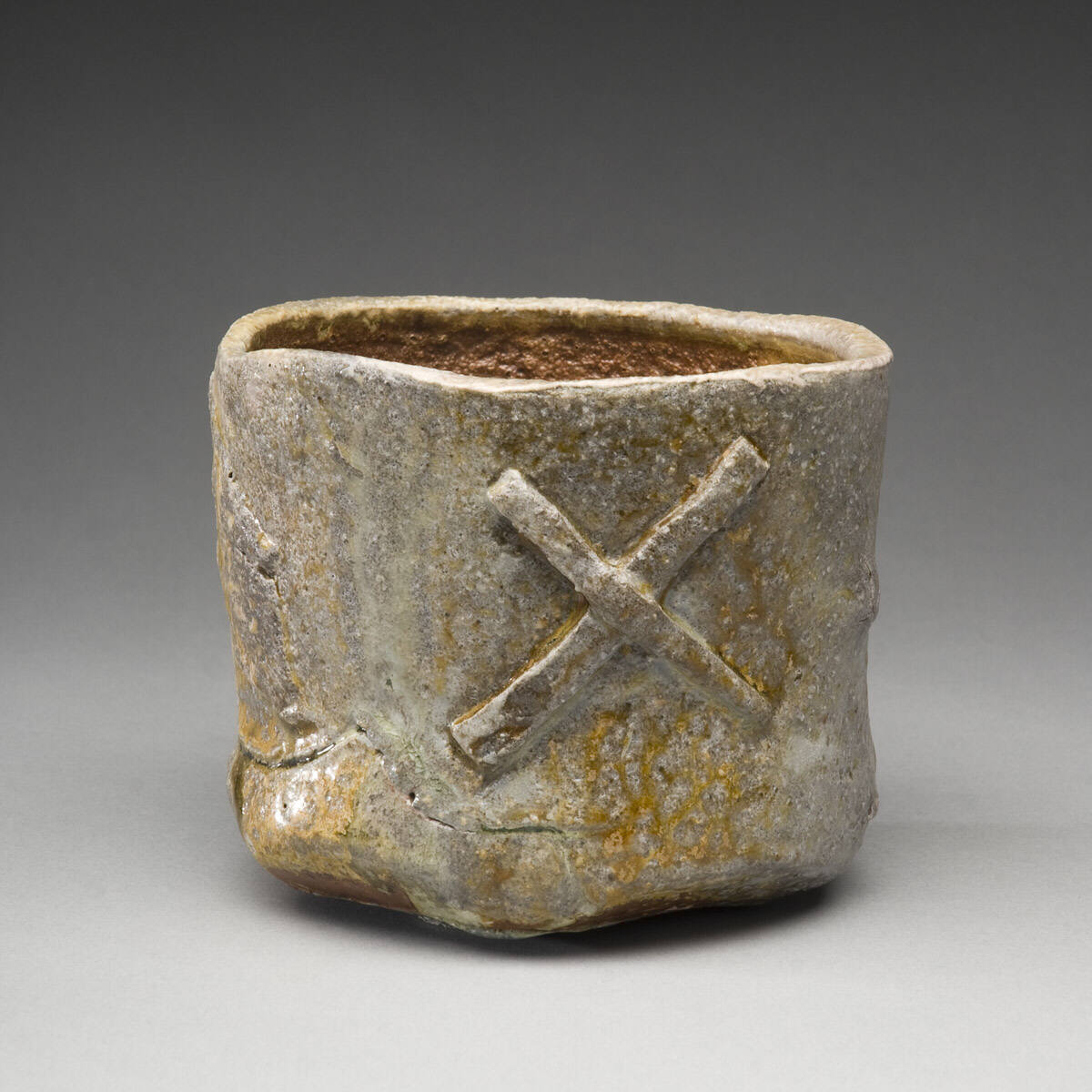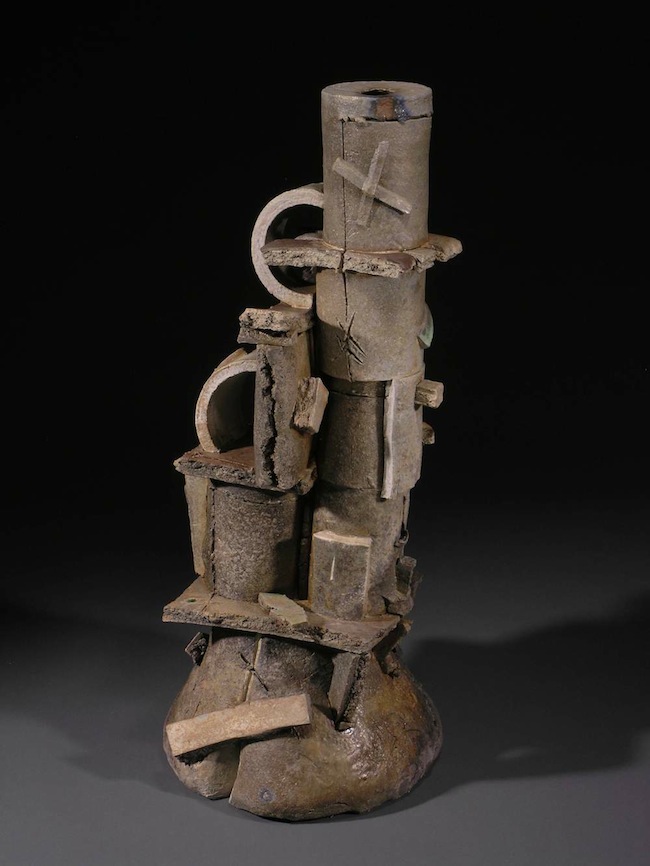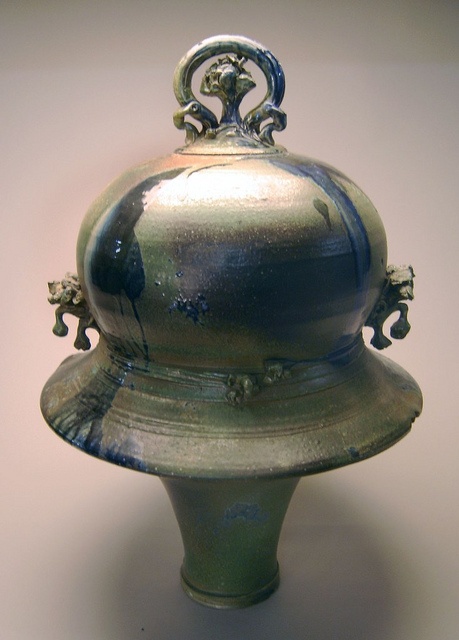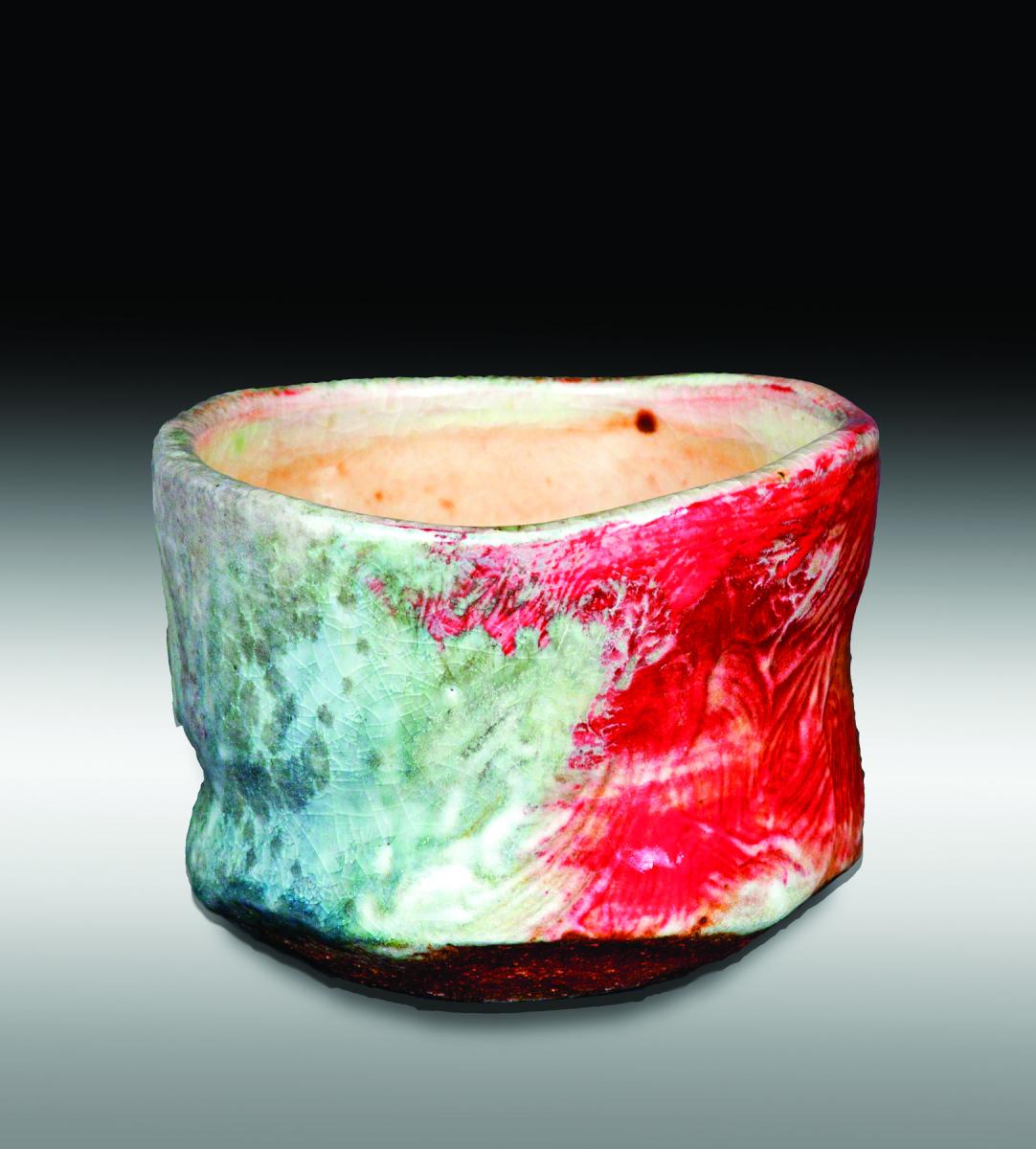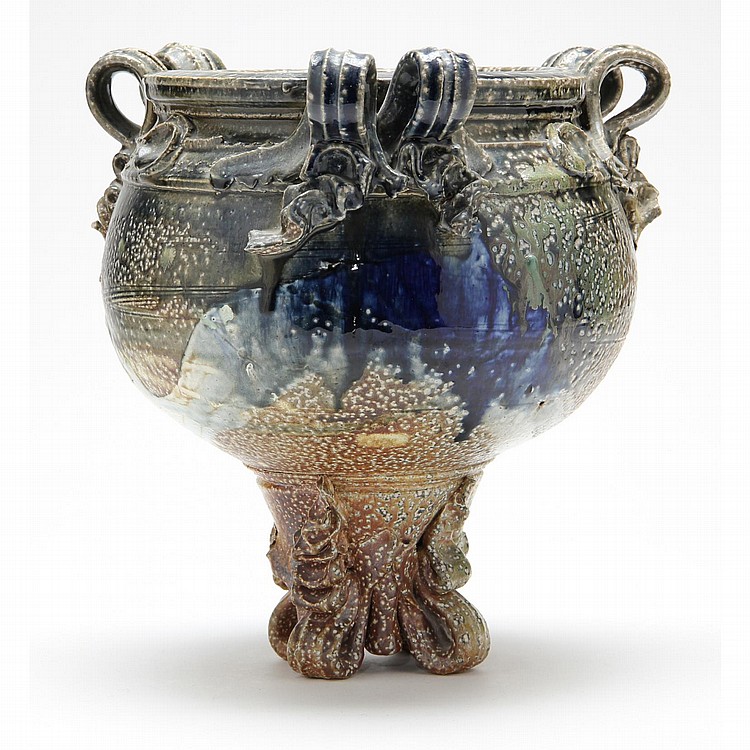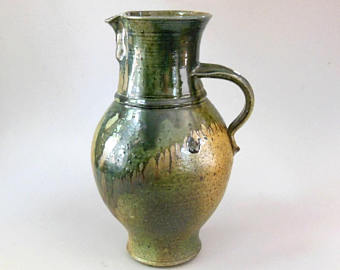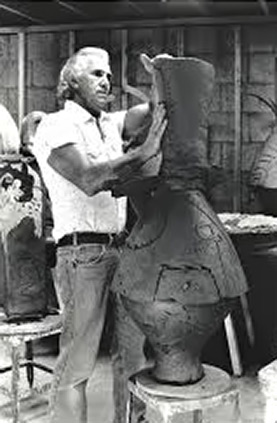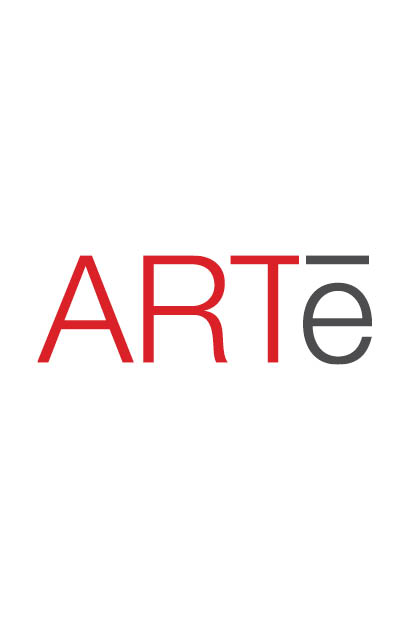Don Reitz • American (1929-2014)
Platter C: 1982 • Stoneware 22" x 22" x 2-1/2"
Canton Museum of Art Permanent Collection
Gift of Leatrice S. & Melvin B. Eagle in Memory of David & Jean Shanker, 999.1
As he lay in a hospital bed waiting for a lot of broken bones to mend, Don Reitz began to think of the accident as a bad kiln firing.
“I’ve always said there is no such thing as a bad firing; it’s only bad if you don’t learn from it and turn adversity into positive energy.” With the help of his sick niece who sent “Get Well” cards with childish drawings, Don Reitz began to disassemble his life and put it back together. Reproducing her drawings in ceramic glazes his “Sara Period” pieces set his art in a new direction leading straight to Canton, Ohio.
If not for dyslexia, Reitz would have become a poet. Instead he made his living working with his hands. He was a naval salvage diver, a truck driver, a commercial fisherman and (for a very short time, we suspect) a dyslexic sign painter. Finally, he became a butcher renowned for slicing rosettes into hams that would open into beautiful patterns when baked. Sometimes the artist just breaks through, no matter what you do for a living.
The tragedy of dyslexia is the way it locks a person’s ability to communicate behind a steel door of jumbled letters. But, often, when one door closes another opens. This was the story of Don Reitz’ life. After the service, he married and worked a succession of physical labor jobs before befriending an Algonquin Indian named Charlie who taught him to love art and later convinced him he could start a new life at age 30. More new doors opened.
He first experienced ceramics as a 28-year old student at Kutztown State Teachers College in Pennsylvania. The attraction was immediate, and soon he was making his own pottery in a handmade backwoods kiln. Knowing little about firing pots he kept sticking a metal pole into the kiln until the pots felt sticky, then he’d pull them out.
He tried selling his pots at a roadside stand with a handmade sign, but no one ever stopped. So he started selling garden vegetables and giving his pots away with every purchase. Another door always opened.
INTERESTING STORIES FROM OUR SPONSORS

By the late 1950s, while a graduate student at Alfred University, he happened upon friend, Don Leach, tending a kiln while smoking a corn-cob pipe. Periodically he would put down the pipe and throw salt into the kiln. Reitz was fascinated. “I will never forget the rush I felt when I threw in my first handful of salt. It started to snap, crackle and pop, and burned little holes in my shirt.”
Throwing salt into the kiln created a glossy surface and gave Reitz a “physical confrontation with the process. The drama, the mystery, the magic.” He remembered the words of famed west coast ceramicist, Peter Voulkos: “There are no rules, only concepts.” Reflecting on his own life, Reitz said, “I’d been making art by the rules. Salt changed that for me.”
Salt became his path to experimentation, communication and personal salvation. Following its unique snap, crackle, pop he strayed from functional pottery to create ceramic art. Soon the University of Wisconsin-Madison came calling looking for a ceramics teacher. Reitz ended up staying for 26 years. There, he put himself back together after his brush with death in a pick-up truck.
Don Reitz lived 32 more years after that accident. He regained the use of his broken limbs and led a jolly life throwing salt, banana peels, wood and more into the kilns just to see what would happen. He moved to a studio Arizona along the Verde River surrounded by ancient Indian ruins, and visited friends along the west coast and Japan, looking for new ceramics adventures
Near the end of his life, he looked back at the time after his accident when he took the childish drawings sent by his cancer-stricken niece and used them to decorate new ceramic art. His “Sarah Period” pieces, including this one at the Canton Museum of Art, were the beginning of another new direction for a man who always found new paths around obstacles life threw in his way.
4 Ways to Sound Smart When Viewing at The Canton Museum of Art
1.
“This is a great example of his ‘Sara Period’, incorporating drawings from his sick young niece, Sara, who was sending him Get Well cards after his own traffic accident.”
2.
“During his ‘Sara Period’ he couldn’t use a potter’s wheel because of his broken limbs. Instead he began experimenting with salt glazed ceramic forms.”
3.
“He was one of the leading proponents of salt glazing, a process dating from the 1400s to give a shiny gloss to ceramics.”
4.
“He once built an anagma kiln dubbed ‘Reitzgama’ because, why not?”
Don Reitz Timeline. Scroll over images to see timeline.
